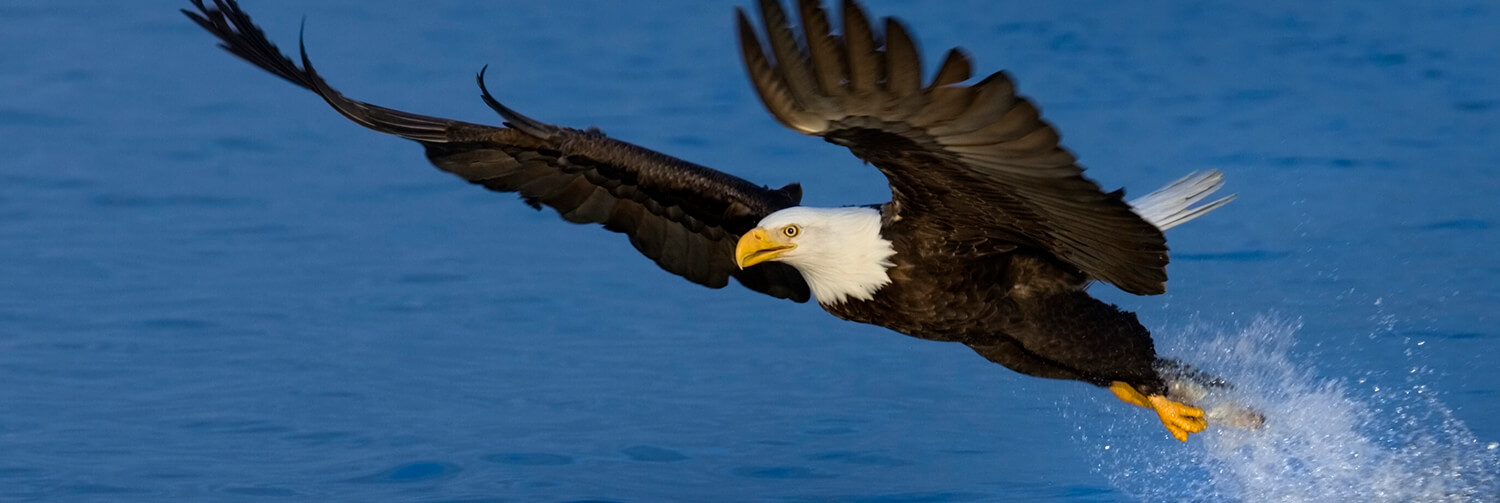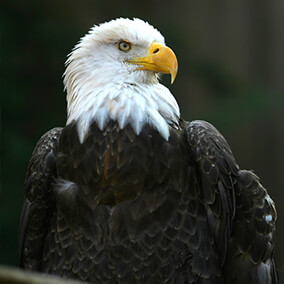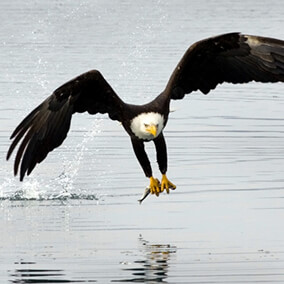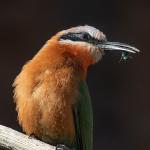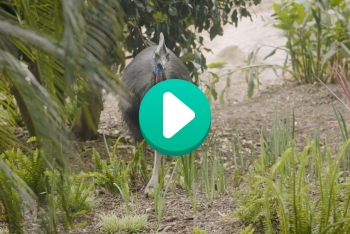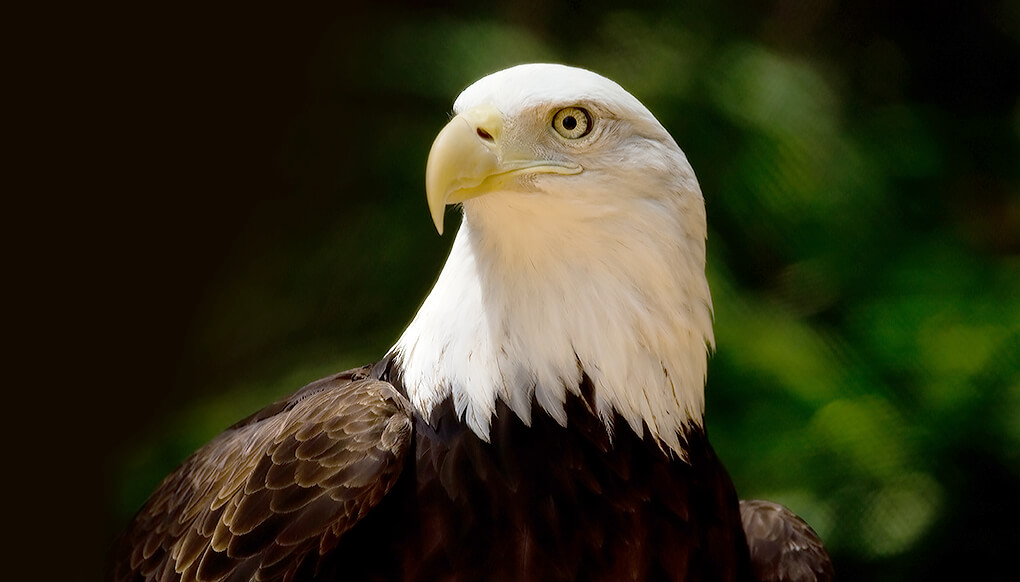
Bald eagle

Birds


Threatened
facts

Bald eagles eat rabbits, squirrels, fish, other birds, and even young deer.

Bald eagles live along coastlines, lakes, rivers, swamps, and marshes.
description
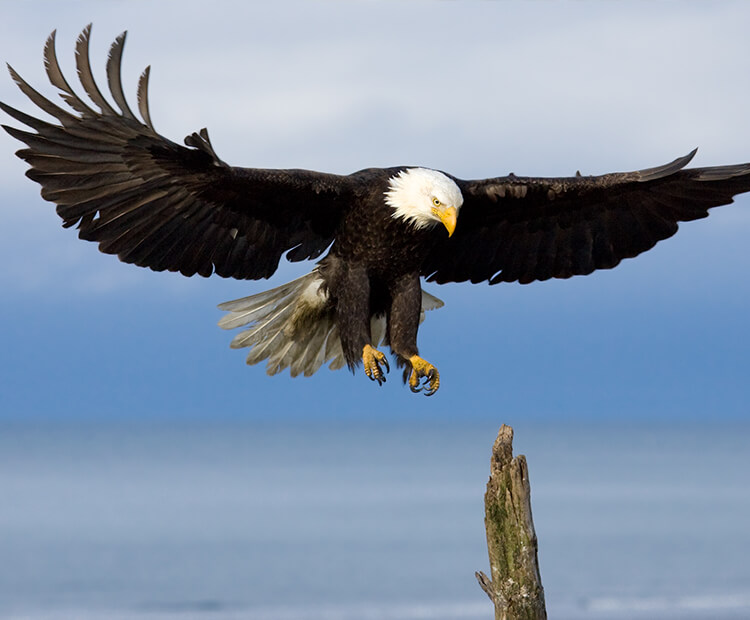
Even though a bald eagle is less than 4 feet tall, its wings more than make up for it—they span from 5.5 to 8 feet! And these birds know how to use them—a bald eagle can reach a speed of up to 200 miles per hour when diving through the air to grab a meal. These wings are really "in tune," because when a bald eagle loses a feather on one wing, it also loses a matching one on the other wing; this way the bird stays balanced.
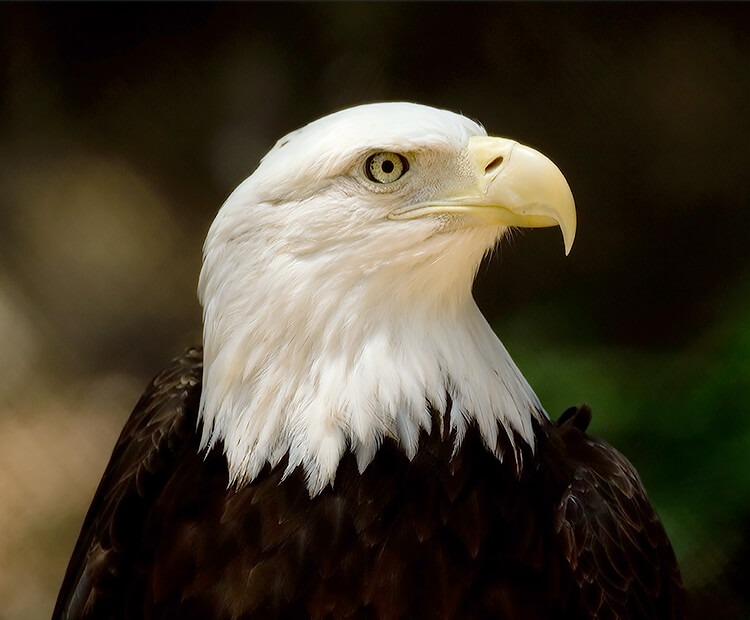
The better to see you with
You may have heard someone say you have "eagle eyes." You should take it as a compliment, because it means you can see things that others might not notice. Bald eagles can see four to seven times better than humans. The bald eagle is also our national bird. But one great American, Benjamin Franklin, thought the bald eagle was a poor choice for a national symbol because it sometimes steals food from other birds.
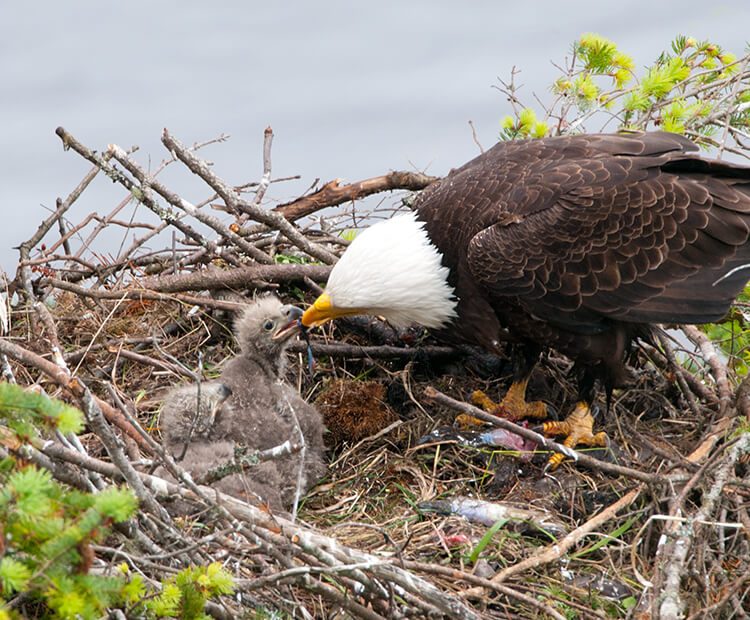
Super builders
Bald eagles are master nest builders. An eagle pair usually makes a large nest high in a sturdy tree. They come back to the same nest year after year, adding more twigs, grass, moss, feathers, and branches each time until it becomes huge. The largest known eagle nest was found in Florida; it measured 9 feet across and 20 feet deep, and it weighed more than 2 tons! Sometimes a nest becomes so heavy that the branches supporting it break, and the nest comes crashing down! Then the eagle pair has to start all over again.
Bald eagles are almost always found near water—on lakes, sounds, or seas. Most live in tundra and forest habitat in Alaska and Canada, but others live in Florida’s mangrove swamps, and there are a few pairs in northern Mexico’s desert regions. In short, the bald eagle is an adaptable bird.

